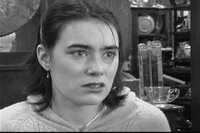Going Out Like a Lamb

A family in northeastern Minnesota has amassed a front-yard snowman that measures 23 feet tall and 50 feet around. This feat would seem heroic enough during a standard Minnesota winter, but given that this January will enter the record books, one must admire their sheer defiance of the elements. Throughout the upper midwest, January has felt more like March, departing with ovine timidity. I've already noticed a few tentative sprouts in some of the perennial and bulb patches in our garden. Here in Minneapolis, we descended into the single digits only once this entire month; historical average low temperatures for January nights are 6 degrees and lower. Pete Boulay, assistant Minnesota state climatologist, states that this January in Duluth has been typical of Springfield, Illinois, a name that conjures only meterological mediocrity. While every previous January on record in Duluth had at least three days with subzero temperatures, it happened only once for a few hours in 2006.
Speaking of defiance, St. Paul continues to boost its winter carnival, an event originally organized to defy a New York reporter's claim that St. Paul in winter was "another Siberia, unfit for human habitation." But the time has come to admit that the emperor wears no clothes: King Boreas might as well strut buck naked through Rice Park for all the chill his arrival brings to these once frigid latitudes. Pond hockey becomes water polo, ice sculpture is now a speed event, and future ice palaces will be constructed of lexan.

As the climate shows all signs of heading south, I have to suspect that it will take a toll on our identity and, modest heating bills aside, I believe that is not a good thing. If winter's adversity no longer defines Minnesotans, who are we? Mosquito swatters alone, I suppose. When they start hatching in February, maybe that will be adversity enough.
I was surprised, therefore, to encounter a description of dwindling winters from the distant past. Published in 1909, Dwight Woodbridge and John Pardee’s two-volume “History of Duluth and St. Louis County” mostly reads like a chamber of commerce tract. But one subheading grabbed my attention:
Decreased Cold of Recent Winters
"During the past ten or fifteen years the extreme cold and rigor of our winters have materially modified. In the early days, forty years ago, the cold of our winters was steady, dry and uniform. Moccasins could be worn without having wet feet from the middle of November to the first of April. It was almost the rule to see ice on the lake until the first of June. The writer knew of two men getting off a steamboat that had been stuck in the ice for several days, on the 9th of June, almost forty years ago, and walking to shore on the broken ice a distance of six or eight miles. Our winters are now much milder than in the early days. We are not now surprised to see all the snow disappear in mid-winter and to have it rain. Such extremes would have been surprising thirty or forty years ago."
Ask any Minnesotan over the age of thirty about winters in their lifetime and they would likely give you a similar response. Reading this passage, I felt a knee-jerk desire to keep it under wraps, to leave this dusty paragraph in the library where no flat-earth global-warming denialist could find it. This is not the sort of armchair meteorologizing we need floating around out there to justify yet another eighty-mile commute. But I had to reflect: am I just another Henny-penny? Are these dog days of January a sign of climate change, or simply a reminder of the jet stream's inconstant path?
The power of the personal anecdote is strong, its homespun authenticity often unassailable, especially when bookbound. But strong, too, is the skeptic's glare. Woodbridge and Pardee’s second volume contains a chapter with a dubious title: “St. Louis County Fertility.” For twenty pages they extol the agricultural potential of what we know now to be a boggy, seasonally-stunted region, best suited to growing s
 pruce and ticks. I suspect that Woodbridge and Pardee were scheming to make a killing on cutover timber lands purchased for pennies on the acre, and hoped to lure a hapless trail of homesteaders into fruitless enterprise.
pruce and ticks. I suspect that Woodbridge and Pardee were scheming to make a killing on cutover timber lands purchased for pennies on the acre, and hoped to lure a hapless trail of homesteaders into fruitless enterprise.But like every cranky grandpa from Lake of the Woods to Lake Street, they still probably remembered their youth with an eye toward the heroic. The Nordskog boys of south Minneapolis are new to the art of snowman installation. Their latest creation, built just after Christmas, attained neither a height of 23 feet nor a girth of 50--we would have to borrow from the neighbors to compile that mass. January has reduced our snowman to a slushy bump on the lawn, and that much only because we posted it in the shadow of the fence. Will my boys look back on their youth and recall frigid white seasons of travail? I am beginning to come to terms with the fact that, as it does for most Americans, winter to Minnesotans will soon simply mean the season when you don't have to mow the grass.




